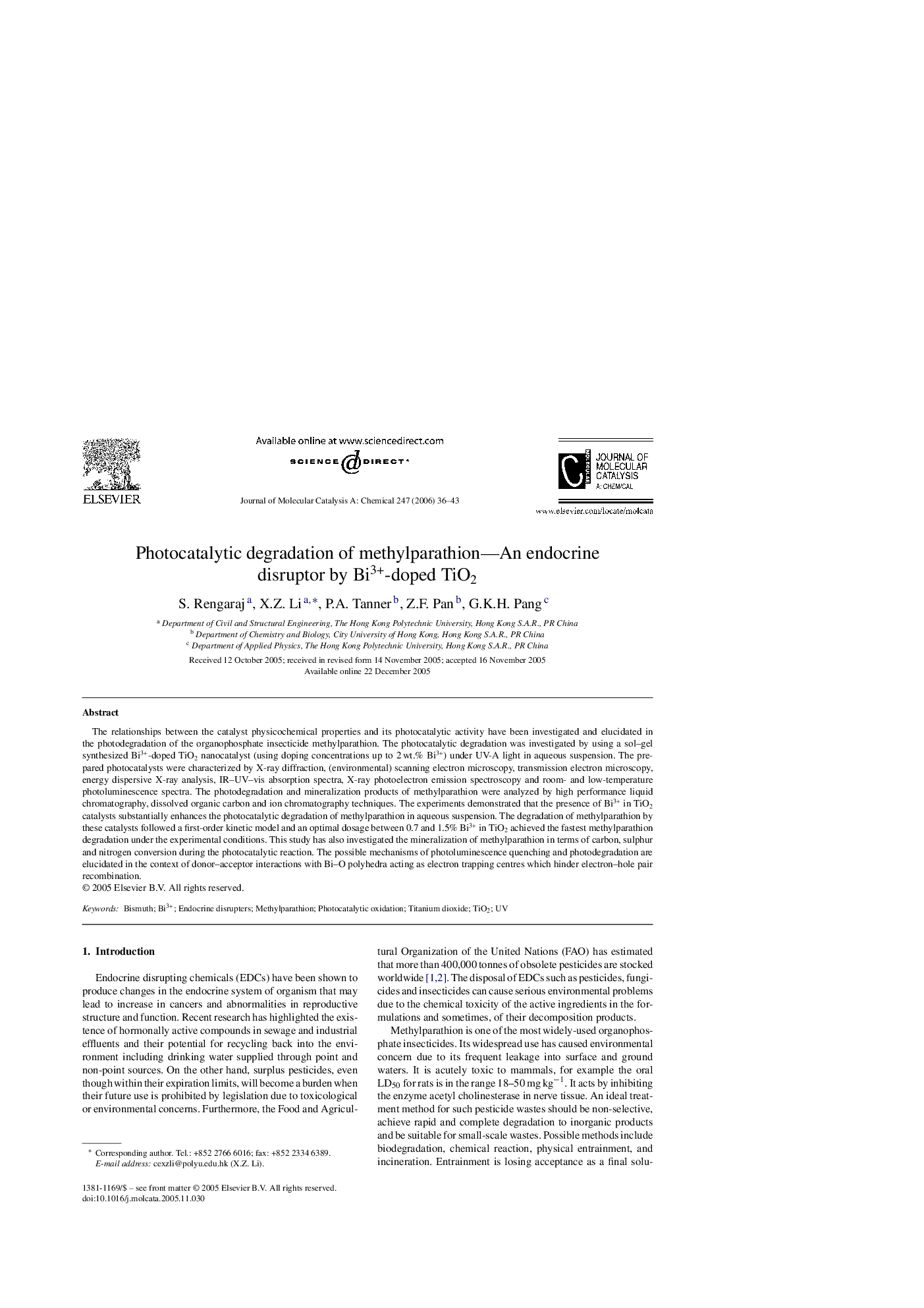| کد مقاله | کد نشریه | سال انتشار | مقاله انگلیسی | نسخه تمام متن |
|---|---|---|---|---|
| 69256 | 48535 | 2006 | 8 صفحه PDF | دانلود رایگان |

The relationships between the catalyst physicochemical properties and its photocatalytic activity have been investigated and elucidated in the photodegradation of the organophosphate insecticide methylparathion. The photocatalytic degradation was investigated by using a sol–gel synthesized Bi3+-doped TiO2 nanocatalyst (using doping concentrations up to 2 wt.% Bi3+) under UV-A light in aqueous suspension. The prepared photocatalysts were characterized by X-ray diffraction, (environmental) scanning electron microscopy, transmission electron microscopy, energy dispersive X-ray analysis, IR–UV–vis absorption spectra, X-ray photoelectron emission spectroscopy and room- and low-temperature photoluminescence spectra. The photodegradation and mineralization products of methylparathion were analyzed by high performance liquid chromatography, dissolved organic carbon and ion chromatography techniques. The experiments demonstrated that the presence of Bi3+ in TiO2 catalysts substantially enhances the photocatalytic degradation of methylparathion in aqueous suspension. The degradation of methylparathion by these catalysts followed a first-order kinetic model and an optimal dosage between 0.7 and 1.5% Bi3+ in TiO2 achieved the fastest methylparathion degradation under the experimental conditions. This study has also investigated the mineralization of methylparathion in terms of carbon, sulphur and nitrogen conversion during the photocatalytic reaction. The possible mechanisms of photoluminescence quenching and photodegradation are elucidated in the context of donor–acceptor interactions with Bi–O polyhedra acting as electron trapping centres which hinder electron–hole pair recombination.
It has been demonstrated that methylparathion was effectively degraded in aqueous Bi-TiO2 suspension to an extent of 97% within 120 min, whilst DOC was also converted into CO2 with the high proportion of up to 62%. Figure optionsDownload as PowerPoint slide
Journal: Journal of Molecular Catalysis A: Chemical - Volume 247, Issues 1–2, 16 March 2006, Pages 36–43